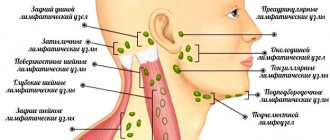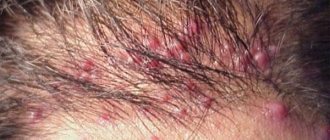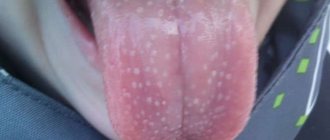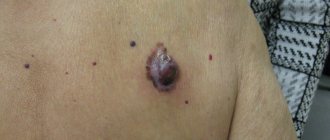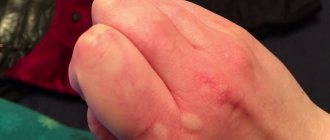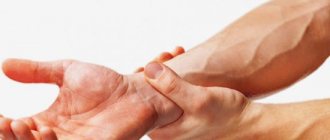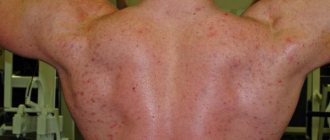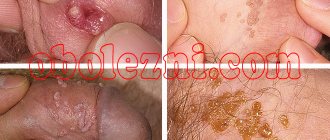Probably every person in the world is familiar with calluses. They can appear on absolutely any part of the body that has been exposed to excessive and systematic friction. But still, these skin formations most often appear on the surface of the skin of the arms or legs.
Calluses are the human body’s response to a negative impact on the skin. They perform a protective function, so in no case should they be equated with pathologies. But it is necessary to start fighting these skin formations as early as possible, since they can develop into increasingly complex forms that are more difficult to treat.
There are several main reasons due to which the process of formation of calluses begins on the toes or other areas of the skin of the lower extremities:
- Tight or, on the contrary, too spacious shoes;
- Shoes made from low-quality materials (synthetics);
- High-heeled shoes (increases pressure on the forefoot);
- Lack of vitamin A in the body;
- Flat feet;
- Problems with excess weight;
- Foot injuries;
- Ignoring basic rules of foot hygiene.
Usually, calluses appear in the form of small blisters with lymph - their treatment is not difficult, the main thing is not to try to eliminate the problem mechanically (pierce, rip, etc.), since this method will not help in any way, and will even worsen the situation - there is a possibility of infection infection in the wound. If, after all, the bubble has been torn off, then in its place gradual necrosis of the skin begins - a dry callus in the form of a lump is formed. It is quite easy to recognize: the lump has clear boundaries and a yellowish-white hue, consisting of compacted layers of keratinized skin. Treatment here must be carried out as carefully as possible in order to prevent complications: dry skin of the corns may begin to crack, and this will be accompanied by bleeding and pain; calluses may also develop a root. In this case, the lump itself will be a source of discomfort or pain.
You can get rid of calluses on your toes either independently or with the help of specialists. There are three large groups of tools that help solve this problem:
- Ethnoscience;
- Pharmaceuticals;
- Professional medical assistance.
You can fight bumps on your feet using traditional methods
Growths on the toes
Lumps, formations and other growths on the toes can appear at any time.
If in winter and in the off-season they are practically invisible, then in summer the situation is different. In hot weather, this problem also becomes cosmetic. What could be growths on the toes, and how to get rid of them? The growths can be a skin problem, or they can also appear as a result of diseases of the musculoskeletal system or other diseases, most often associated with metabolism. It is very important to diagnose formations correctly and timely. Only a specialist can do this correctly.
The same causes can have different types (this, for example, can be said about warts). And even more so, you should not prescribe medications or perform procedures that are not prescribed by a doctor, especially when it comes to a child.
What it is
"Growth" is not a medical term. This word refers to any formations on the bones or skin. But depending on the cause of their appearance, they can be an actual growth on the bone, a callus, a wart, a tumor, or a joint deformity. This happens quite often on the toes.
The growth in this place can be soft or hard, localized on the back or plantar part and even between the toes. Outwardly, such formations often look the same, although the reasons for their appearance are different. They cause discomfort as they stick out and are irritated by shoes. Particularly serious problems arise due to growths between the toes. They can injure surrounding tissues and cause irritation.
Growths most often occur in middle-aged or elderly people due to the fact that their legs are subject to increased stress. But some types of pathologies accompanied by growths can occur even in a child.
Hallux valgus
In fact, it’s not even a growth, but a protrusion of the big toe, or a violation of the anatomy of the foot. In other words, this is an acquired skeletal deformity. For what reasons does this disease appear? It could be:
- Tight, uncomfortable shoes. When the foot remains in an uncomfortable position for a long time, the bones begin to shift so that they take on shapes similar in shape to a pair of shoes.
- Increased load. Most often we are talking about athletes. The risk group includes people who professionally lift weights (bodybuilding, weightlifting) or who have prolonged activity on their feet (dancers, football players). Increased load on the forefoot is also present in those women who prefer to walk in high heels. A pair of shoes leads to such consequences if the heel is over 5 cm.
To correct the situation, you first need to eliminate the source, the cause of this condition. Of course, few people will decide to give up professional training, but you can temporarily limit the load. If it's all about the shoes, then you need to replace them with anatomically correct ones. By the way, it is absolutely not necessary to buy shoes in specialized stores, because they cost a lot of money there.
It is enough to purchase special correctors. They can be made of plastic or silicone and are inserted into shoes from the inside. Such correctors fix the finger in the correct position and evenly distribute the load. They should be worn for a long time, several months.
Over time, the arch of the foot will acquire its previous correct shape. Most likely, the patient will be prescribed a course of anti-inflammatory or painkillers, since hallux valgus is usually combined with other diseases (bursitis, arthrosis, etc.).
Which doctor should I contact for help?
- The main specialist is a dermatologist. However, depending on the nature of the disease, there may be other options.
- In the case of callus, you should seek help from a surgeon. It will also help with purulent, infected and severe calluses.
- In other situations, aesthetic medicine specialists can come to the rescue. Using cryotherapy, laser or hardware drilling, the defect can be removed.
In particularly advanced situations, the intervention of a surgeon and an operation may be required, which will affect the entire life activity of a person and limit the usual physical activity. In addition to laser and surgery, conventional ointments can be used in treatment. But often a person notices the presence of a problem already in an advanced state, which requires a serious approach to recovery.
To effectively combat calluses, their prevention is necessary. In areas most susceptible to mechanical stress, it is worth applying cream in the evenings or gluing a patch when wearing uncomfortable shoes. Socks and shoes on your feet must match in size and be made from natural fabrics and materials.
Dermatofibroma
This formation, unlike the previous one, has a solid structure. It often appears on the top of the fingers, on the back side. To diagnose it yourself, just try to collect a patch of skin in this place. If a dermatofibroma is present, the skin will pull inward into a fold.
Normally, this area of skin has a darker reddish tint. If the dermatofibroma grows to a large size, then in the center you can clearly see a tubercle, more solid in structure than the entire formation.
Causes of dermatofibroma:
- insect bite;
- untimely opened boils;
- penetration of foreign objects into the thickness of the skin.
Its main danger is that it has the ability to degenerate into dermatofibrosarcoma, and this is an oncological diagnosis with all that it implies. And, of course, it causes a lot of inconvenience to a person, preventing him from leading a normal active life. It is almost impossible to treat dermatofibrosarcoma at home.
Warts
These benign formations appear on the toes quite often, but mainly in those individuals who have weakened immune systems. They look like calluses, but they are hard inside. And also on the top of warts you can see dark dots, these are dead blood vessels. Warts are not as harmless as they seem. This is not a simple cosmetic defect that prevents a person from wearing open shoes.
Warts cause severe pain when walking if there is friction between the skin and shoes. In the area of the fingers this happens extremely often. This can be observed especially often if the formation is located under the thumb or second finger. A person’s gait changes, and he intuitively tries to shift some of the load to other parts of the foot.
Sweating and elevated temperature only aggravate the situation and help in activating the human papillomavirus, which became the source of such formation on the toes. Pain and discomfort while walking lead to a change in a person’s gait, and this is a serious reason to immediately consult a doctor.
In addition, constant friction against this growth leads to microtraumas of the skin, and the epidermis becomes wounded and more permeable to many pathogens from the external environment. In addition to warts, a person may soon encounter fungi and streptoderma. If a wart appears near the nail, in the area of its base, then it can affect the size and shape of the nail and affect the rate of its growth.
Warts are treated in a specialized cosmetology office. You can choose the cryodestruction method, wave technique or laser. In some cases, if the location of the wart allows, it is removed surgically. The difficulty is that you need to completely remove the growth particles from the skin. Otherwise, after some time the wart will grow back.
There are also traditional methods of removing warts, which are no less effective. The most popular method is to periodically smear this area with fresh celandine juice. The juice should dry on its own. After two weeks of this therapy, the wart will dry out and begin to fall off. You can also use vinegar. Both regular and apple cider vinegar are suitable for these purposes.
You need to soak a cotton swab in vinegar and wipe the wart with it. You cannot pour vinegar directly onto the formation! This may cause skin burns. To prevent the growth of warts, it would be useful to take a course of antiviral drugs, but only a therapist should prescribe them. It is not always possible to cure warts completely. It is important to monitor your immunity, because this is the only way to prevent the activation of the virus.
Complications
You need to learn how to treat calluses. You can’t hesitate when dealing with growths. There is a risk of complications. The attending physician will conduct a diagnosis and select the most appropriate treatment. The most dangerous callus is one with a blister, as there is a risk of infection.
When a blister becomes infected, the area around the formation turns red. Severe swelling appears. The fluid inside the tumor becomes cloudy. There is a risk of cloudy discharge. The patient's body temperature rises. The pain makes it difficult to move and makes itself felt even at rest. If the patient does not learn in time how to treat a wet callus, sepsis begins and a visit to a surgeon is required.
Types of dry calluses and causes of their appearance
There are two types of calluses that appear between the toes: internal and core-shaped.
- Internal. Gradually, a small compaction of keratinized particles begins to appear on the affected area of the skin. At first, such a callus does not cause discomfort. But if treatment is not started at this stage, the compaction will grow and take on a cone-shaped shape. After this, the person begins to feel pain when walking, and gradually his gait changes.
- Rod-shaped. This type of callus is a growth with a small hole in the middle. Under a thick layer of keratinized skin particles there is a callus root, which grows deep into the soft tissues of the leg and comes into contact with the nerve ending. While walking, a person presses on the callus and feels dull and sharp pain. Removing this type of growth will require a lot of time and effort.
Both types of calluses occur for these reasons:
- uncomfortable shoes (inappropriate in size, very narrow, with an uncomfortable last);
- constantly walking in high heels;
- unworn shoes;
- wearing shoes on bare feet;
- any form of flat feet;
- deformation of the foot or individual toes;
- the appearance of bone growths;
- regular swelling of the lower extremities.
Tumors
Mostly benign neoplasms are common. Often a hygroma appears on the dorsum of the foot. It forms on the bones of the fingers and is a protrusion of the joint capsule or tendon sac. This formation is painless and can disappear on its own at the initial stage. But when rubbed by shoes, it can become inflamed and cause serious pain.
Slightly less often, malignant tumors form on the toes. These can be sarcomas, osteomas, chondromas. A very large formation of a bizarre shape grows as a result of skin cancer. This growth is called verrucous carcinoma.
How to remove dry callus
You can get rid of internal dry or rod-shaped callus using conservative treatment methods, traditional medicine or hardware procedures.
Creams
The use of special creams is a conservative method of treatment. With the help of such drugs you can get rid of both internal and rod-shaped calluses. It is best to use these tools:
- Evo cream with urea. Apply to the problem area of the skin in the morning or evening until the problem is completely eliminated.
- Not a callus. Apply the patch to the callus, first cutting a hole the size of the growth in its center. The problem area is smeared with cream and sealed on top with a second patch for 2 days.
- Super-Antimozolin. Apply the cream to the problem area, cover with wax paper and put on socks. After two hours, rinse with warm water, removing the softened skin of the growth. Use daily until the problem is completely removed.
Plasters
The use of special patches helps to soften the keratinized particles from which the callus is formed and remove it painlessly. Try these drugs:
- Compeed. This patch simultaneously softens the rough callus tissue and protects it from rubbing with shoes when walking. Salicylic acid in the product is responsible for softening. Before use, warm the patch in your hands and stick it on the callus so that it covers it completely. After 2 days, remove the adhesive plaster and take a warm foot bath to completely soften the skin.
- Salipod. Before applying the patch, you need to prepare the skin and take a softening bath. Immediately after this, apply the patch to the callus without touching healthy skin. After a day, remove the softened part of the growth with nail scissors and cover it with a band-aid for another day.
- Salicylic patch. It has a fabric base with salicylic impregnation. Before you seal the callus, you need to steam your feet. After a day, the patch is removed and the softened seal is cut off.
Various procedures
If the callus has become too dense and conventional pharmaceutical products can no longer get rid of it, it is necessary to resort to a hardware removal method.
- Drilling. The procedure is performed by a dermatologist. The area with the callus is treated with an antiseptic and the growth is drilled out with a device whose operating principle resembles a drill. No anesthesia is used as only a slight burning sensation is felt.
- Laser. Suitable for removing core-shaped calluses. Complete elimination of the problem occurs in 1-2 procedures. The laser beam penetrates deep into the skin and evaporates the liquid from the growth cells without contacting healthy tissue. The method is painless.
- Cryotherapy. The procedure uses liquid nitrogen, which leads to the destruction of the skin growth. Local anesthesia is used. More suitable for removing internal dry calluses or fresh calluses.
Folk recipes
- Potato compress. Grate one small potato on a fine grater. Wrap the prepared pulp in a bandage and apply to the callus for 2-3 hours. After removing the compress, cut off the softened area of the callus. The compress can be done 2 times a day until the skin growth is completely removed. If the recipe is used to eliminate a callus with a core, after softening the top layer of skin, it is advisable to reach the core and pull it out using tweezers.
- Aloe juice. Cut the aloe leaf in half and apply the freshly cut side to the softened callus. Secure the compress with a bandage and leave for several hours. After this, you need to cut off the softened part of the growth. Repeat the procedure every day until the problem is completely eliminated. Make a compress with aloe before bed.
- Nettle. It is best to use young nettles for this recipe. Pluck a few leaves of the plant and grind into a paste. Apply the finished mixture to the affected area of skin, placing a cabbage leaf on top. The compress should be secured with a bandage and wool socks should be worn. After 3-4 hours, remove the compress and carefully cut off the softened skin of the growth. Repeat the procedure for several days in a row until the callus is completely removed.
- Burdock. Using burdock leaves you can get rid of calluses in just 5-7 days. To prepare a compress, pick a few leaves of the plant and grind into a paste. Apply the finished mixture to the callus and press with a whole burdock leaf. Secure the compress with a bandage and leave for 3-5 hours. After this, remove the softened part of the callus.
Surgical removal and minimally invasive techniques
- Surgical methods are used infrequently today, since there are many alternative, gentler treatment options. These include laser treatment and cryotherapy. These options are safe, painless, and quickly remove skin growths without leaving scars or consequences.
- Laser beams burn the callus layer by layer, preventing its possible reappearance. This procedure also eliminates germs. In addition, it is carried out quickly. Its only drawback is its high price.
- Cryotherapy is an effective and inexpensive treatment method. The principle of operation is to burn out thickenings using liquid nitrogen. Low temperatures freeze pathological tissues, resulting in their complete death.
Knowing how to cure dry calluses on the skin, you can make your legs beautiful and smooth. As reviews show, professional minimally invasive methods of treating the problem will be the most effective.
Prevention in the future
To avoid the recurrence of calluses, follow these rules:
- maintaining personal hygiene;
- use of softening creams and baths;
- refusal of uncomfortable shoes;
- rare use of high-heeled shoes;
- at the first sign of the appearance of a callus, treat it in a timely manner.
Also, avoid allowing the insoles to curl or become thin.
Effective pharmaceutical drugs
Modern pharmacies provide a wide selection of different remedies for calluses on the feet, which, if used correctly, will be quite effective.
Creams
Medicinal substances with a creamy texture can soften the rough tissue of calluses, which can then be simply removed with a pumice stone. Most creams for dry and callus calluses contain the following substances:
- salicylic and glycolic acid;
- urea;
- tea tree (oil);
- menthol with camphor and ethanol. Individual remedies may include celandine, oak bark and tea tree. Popular creams today are Namozol, Lekar, Super Antimozolin.
Signs and causes of callus formation
A callus on the leg or in another location may appear for the following reasons:
- wearing tight shoes;
- long walk;
- wearing high-heeled shoes for a long time;
- overweight;
- herpes virus;
- foot deformity;
- problems with veins in the lower extremities.
The symptoms of callus formation are difficult to confuse with something else - pain is felt during mechanical action, the skin turns red or a watery seal forms, and sometimes itching occurs. The appearance of a corn depends on its type:
Wet callus . It is a soft blister filled with liquid content. It has a round shape in the form of an elevation above the skin. It can be brown or yellowish in color, and may turn red from the admixture of blood in the lymphatic fluid that fills the bladder. Possible itching and burning. It is forbidden to pierce or open it yourself
Dry . A hard formation characterized by dry skin. The affected area of the epidermis becomes rough and becomes covered with a crust of dead epithelial cells. Color varies from flesh to yellow. The surface is characterized by low sensitivity when pressed. A dry callus on the toe can cause discomfort and pain. Its manifestation and method of disposal depend on the location.
Rod . A complex variety is root callus. It is called internal because the rod grows into the tissue. It looks like a small compaction of keratinized particles with a depression in the center where the tap root goes. It puts pressure on nerve endings and tendons, which causes acute pain.
Bone . It is formed in case of a fracture at the site of fusion of the bone on the big toe. Converted from cartilage tissue.
What not to do
Before treating a dry callus on your toe or foot, it is recommended to consult a dermatologist. This is necessary because when using various means to remove formations, there is a high risk of infection entering the skin. What not to do with calluses:
- Removal of dry calluses by cutting or mechanically cutting off the core of the ingrown formation. Such manipulations will not bring the desired result, but can provoke infection of surrounding tissues;
- Removing calluses on the toes using unsafe recipes that involve exposing the skin to aggressive acid. To get rid of the problem, there is a medication for dry calluses on the toes, which will gently and effectively eliminate the thickening;
- Removing the growth using non-sterile instruments. Infection easily penetrates through wounds and inflammation begins to develop.
Localization Features
Corns form on protruding areas that are most susceptible to friction - the heels, the sole of the foot, the side of the foot. A special case is the formation of calluses on and between the toes.
On the little finger
A callus on the little toe appears when wearing shoes with a narrow toe. Women's summer sandals can also rub the small toe on top. This is influenced by the material of the shoe and the slipping of the foot as a result of sweating. To avoid little toe corns, it is recommended to buy shoes made of high-quality material, wear heel pads, and treat your feet with talcum powder.
On the thumb
The big toe bears the heaviest load in the natural distribution of weight during walking. If the shoes are not the right size or fit awkwardly, then you should expect an unpleasant illness to appear soon. The formation is localized on the side or bottom of the finger. In addition to shoes, the formation of calluses is affected by flat feet, excess body weight, poor metabolism, and fungus on the feet and nails. To prevent the occurrence, it is necessary to monitor foot hygiene, walk moderately and prevent pathological developments of the foot.
On other fingers
On the remaining fingers (index, middle and ring), calluses occur less frequently. The reason for this is changing shoes after a long break or new shoes. Interdigital calluses are more likely to form, since this area of skin is thin and delicate. Water bubbles form between the fingers.
Tofus
Quite often, the growth on the big toe is a gouty tophi. Gout is a pathology caused by metabolic disorders. As a result of an excess of purines in the body, the deposition of uric acid salts in the soft tissues near the joint begins. Mostly men who consume a lot of meat, alcohol, canned food, and smoked foods are susceptible to the disease.
Most often, the pathology affects the big toe. A painless lump begins to grow on the side of his foot. She is mobile and solid. During exacerbations, this area turns red, swells, and severe pain appears. When injured by shoes, tophi can become inflamed and infected. Then a purulent process develops.
How to treat at home
You can get rid of calluses on your fingers at home. Folk remedies will help remove annoying growths:
- manganese solution. Dilute 1 drop per glass. Pink liquid will help soothe pain, relieve inflammation (abscess);
- soda bath. One teaspoon per liter of warm water. Keep your feet in the solution for 20-30 minutes, the skin will soften, and the callus will begin to disappear. You can gently rub it with a pumice stone;
- compresses made from salicylic acid or lemon juice;
- grated garlic and onion peel (for watery, core calluses);
- vinegar essence. Use the medicine carefully so as not to burn healthy areas;
- camphor alcohol.
If the callus begins to become inflamed and swollen, grated potato gruel will help relieve the symptoms. It is necessary to apply the mass 2-3 times a day. The growth will become softer, and after a couple of days the inflammation will begin to subside.
If the rubbed area continues to hurt, it is recommended to use lotions made from calendula leaves. Baths of table salt will eliminate pain and keratinization of the skin. They relieve fatigue, soften the epidermis, and disinfect. Take 15-20 minutes.
You can treat growths with an ointment made from aloe juice and fish oil. The compress should be applied at night; in the morning it is recommended to rinse the treated area with chamomile decoction. The formed bubble can be removed with homemade ointment made from plantain, milk, and green peas.
Eliminates bubbles and solid formations with a mixture of pharmaceuticals - iodine and aspirin. It is necessary to dissolve 4-5 capsules of aspirin in 10 milliliters of iodine. Apply at night for 3 days, then take a break for 10-14 days. Sometimes alcohol and vitamins A and E are added to the medicinal cocktail to promote regeneration and hydration.
You can make your own product based on celandine, honey, and propolis. This mixture promotes cell renewal, destruction of bacteria, and wound healing. A tincture made from the buds of coniferous trees (spruce, pine) has a healing effect.
Folk remedies
At the initial stage, you can get rid of the growth using folk methods.
There are several effective methods:
- Aloe compress. Relieves pain and swelling. Eliminates the inflammatory process. To use, remove the outer skin from the sheets. The pulp is applied to the affected area. It is fixed with a bandage. The sheet is changed once a day.
- Chamomile and calendula decoction. You need to mix the raw materials in equal quantities and add water. The liquid is brought to a boil and left for 2 hours. A sterile cloth is soaked in the liquid and placed on the area with growths. This will soothe the skin and activate the recovery process.
- Foot baths. Feet should be steamed in water with the addition of oak bark. This will speed up the regeneration process. The skin will become more resistant to negative influences. The procedure is repeated daily for 5-15 minutes. The main thing is that the water has an average temperature and is not hot.
- Garlic compress. The vegetable is crushed and made into a paste. It is used as a compress.
Before using any unconventional methods, consult a doctor. Any natural component can provoke an allergic reaction. The doctor will help make sure there are no contraindications. The doctor will tell you how to treat water callus safely and effectively.
Important! Non-traditional treatment is effective in combination with traditional treatment.
